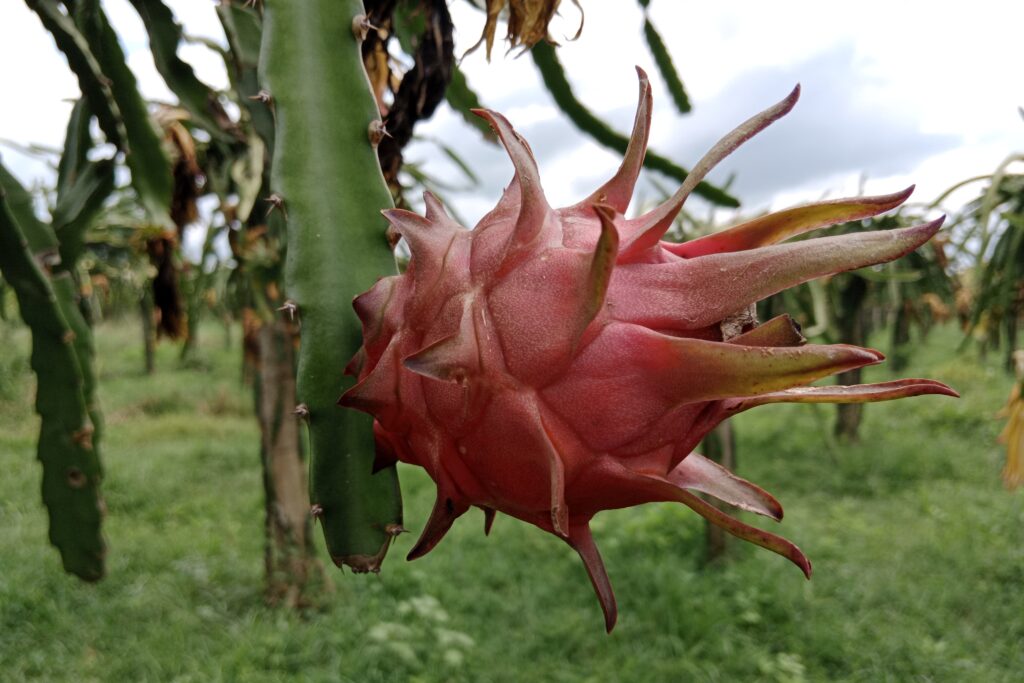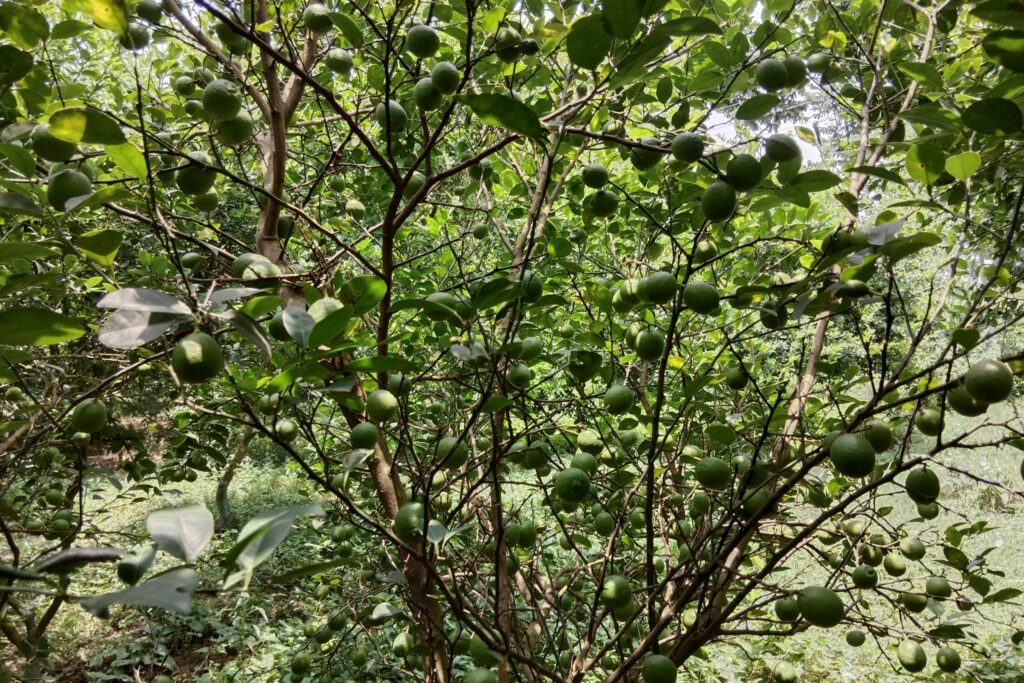Coffee Farming
Understanding the long-term coffee farming profit per acre is essential for Arabica growers. This variety requires an initial investment of NRs 340,000 for establishment costs like land preparation, saplings, and irrigation. Combined with recurring maintenance expenses of NRs 75,000 annually over 24 years (Years 2–25), totaling NRs 1,800,000, the cumulative expenditure reaches NRs 2,140,000. Against total earnings of NRs 2,843,500 generated during its 25-year productive cycle, Arabica delivers a net profit of NRs 703,500. This translates to an average annual profit per acre of NRs 28,140, reflecting its moderate but steady returns.
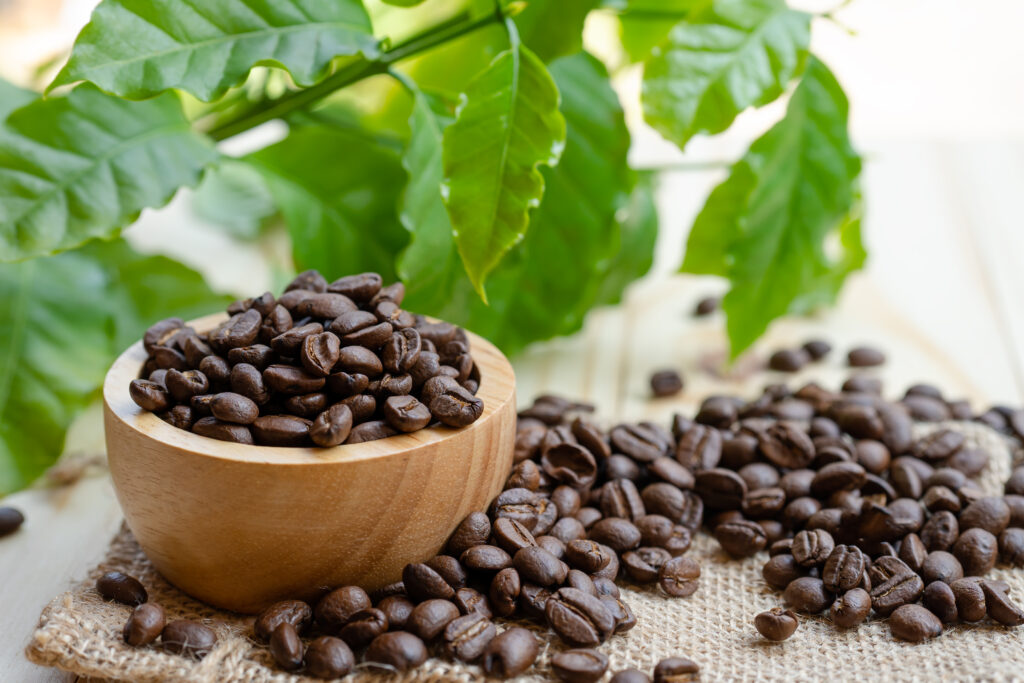
Robusta coffee demonstrates significantly higher potential for coffee farming profit per acre across its extended 30-year lifespan. While the initial setup cost matches Arabica at NRs 340,000, Robusta incurs maintenance costs for 29 years (Year 2–30) at NRs 75,000/year, amounting to NRs 2,175,000. This brings the total investment to NRs 2,515,000. However, robust yields generate substantial income of NRs 4,563,250 over 28 productive years, resulting in a far greater net profit of NRs 2,048,250. Consequently, Robusta achieves an impressive average annual profit per acre of NRs 68,275, underscoring its superior long-term economic viability.
Land Preparation
The land preparation process begins with clearing existing vegetation such as trees, shrubs, large weeds, and rocks, where mechanical clearing or manual slashing is preferred over environmentally damaging slash-and-burn methods.
Next, on relatively flat land, deep ploughing (18-24 inches) is performed to break up compacted soil, incorporate organic matter, and improve aeration and drainage, followed by harrowing to create a finer tilth and level the field; on slopes, minimal tillage or contour terracing is used instead to prevent erosion.
Stumping then removes remaining tree stumps and large roots. Finally, the field is precisely marked to indicate the exact spots for planting pits according to the planned spacing.
Soil Type
The ideal soil for coffee cultivation is deep (a minimum of 1.5-2 meters to allow for adequate root development, anchorage, and access to water and nutrients), well-drained volcanic soil such as Andosols or Loams, rich in organic matter; excellent drainage is critical because coffee roots are highly susceptible to root rot in waterlogged conditions.
The optimal soil pH is slightly acidic, ranging from 5.0 to 6.0, as nutrient availability is impaired outside this range, especially above pH 7.0 or below 4.5. Loamy soils, providing a balanced mix of sand, silt, and clay, are ideal, whereas sandy soils drain too rapidly, requiring increased irrigation or fertigation, and heavy clay soils drain poorly and are prone to compaction.
Furthermore, the soil must be fertile, rich in organic matter, and contain essential nutrients including Nitrogen, Phosphorus, Potassium, Calcium, and Magnesium.
Climatic Requirements
| Parameter | Arabica (Coffea arabica) | Robusta (Coffea canephora) |
| Temperature | 18–22°C (64–72°F) average. Frost-sensitive. Sustained >30°C (86°F) or <10°C (50°F) causes stress. Requires distinct cooler/drier season for flowering. | 22–26°C (72–79°F) average. More heat-tolerant (up to ~30°C/86°F), slightly more cold-sensitive. |
| Rainfall | 1,500–2,500 mm (60–100 in) annually, well-distributed. Critical: Distinct dry period (2–3 months) for flowering/ripening. Excessive rain during flowering/fruiting is detrimental. | Same as Arabica. |
| Altitude | 900–2,000 m (3,000–6,500 ft) ASL. Higher altitudes yield slower-maturing, denser, higher-acidity beans (preferred for specialty coffee). | 0–900 m (0–3,000 ft) ASL. Thrives in warmer, lower elevations. |
| Light & Exposure | Prefers dappled sunlight/partial shade (especially when young/in hot regions). Full sun possible with management but increases heat/water stress & weeds. Windbreaks essential. | Same as Arabica. |
Major Cultivars
| Cultivar Type | Category | Key Cultivars & Notes | Production Share & Key Traits |
| Arabica (Coffea arabica) | Traditional | Bourbon, Typica (genetic base for many cultivars) | ~60% of global production • Superior cup quality • Lower caffeine content • More climate-sensitive |
| Modern/Hybrids (Disease Resistant) | Caturra, Catuai, Mundo Novo, Maragogype, SL28, SL34, Geisha/Gesha (premium quality), Castillo, Colombia, Catimor hybrids (e.g., Costa Rica 95, IHCAFE 90) | ||
| Robusta (Coffea canephora) | Common | Kouillou (Conilon), Robusta selections (e.g., Apoata, Nemaya) | ~40% of global production • Higher caffeine content • Stronger, bitter taste • Used in blends & instant coffee |
Planting
a). Planting Season
Planting season for coffee coincides with the onset of reliable rains to ensure adequate soil moisture for seedling establishment, typically occurring during the early rainy season.
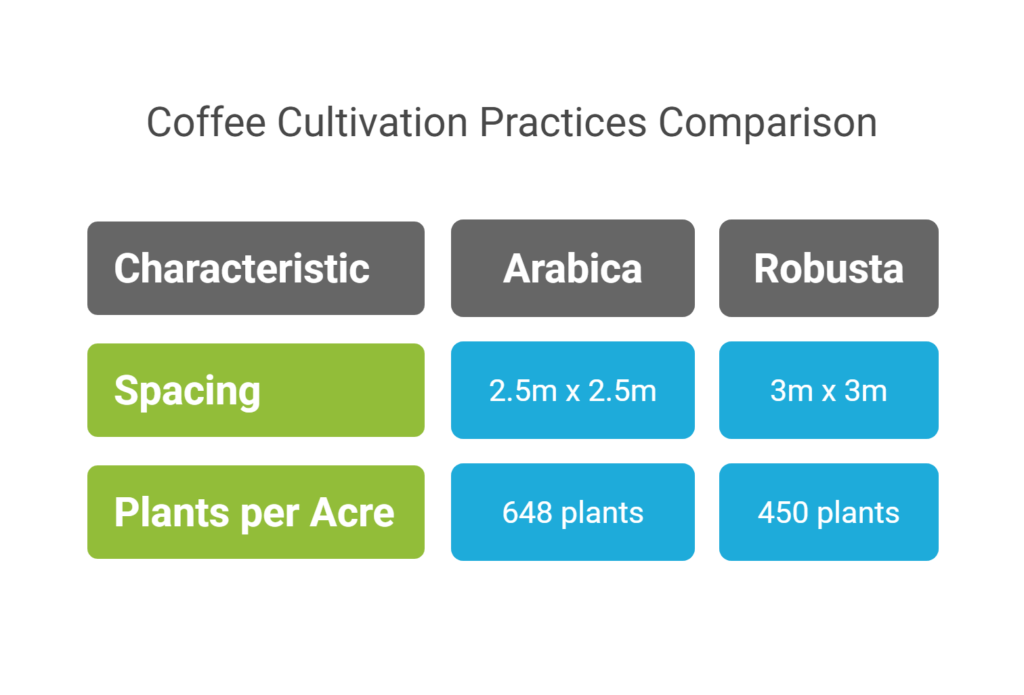
b). Spacing
Spacing in coffee cultivation varies depending on factors such as cultivar vigor, soil fertility, terrain, and the pruning system employed. Commonly recommended spacings include 2.5m x 2.5m for Arabica coffee and 3m x 3m for Robusta coffee. While closer spacing can initially enhance yield potential, it demands more intensive management practices. Conversely, wider spacing facilitates easier management and provides room for better plant growth over time.
c). Pit Preparation
Pits for coffee planting are typically sized at 45 cm × 45 cm × 45 cm, excavated 2–3 months before planting; during preparation, the topsoil and subsoil are separated, then the pit is refilled by mixing the reserved topsoil with 5–10 kg of well-decomposed farmyard manure (FYM) or compost and 150–200 g of Single Super Phosphate (SSP) or another basal phosphate fertilizer, followed by mounding the soil slightly above ground level to improve drainage.
d). Planting Method
The planting method begins with selecting healthy, vigorous seedlings (6–12 months old, exhibiting 4–6 true leaves and a sturdy stem), carefully removing them from their nursery containers while preserving the root ball intact. The seedling is positioned centrally in the prepared pit at its original nursery depth, followed by gentle backfilling with soil and light firming around the base. Immediate thorough watering is essential to settle the soil, after which mulch is applied around the base to conserve moisture and suppress weeds; temporary shade is provided, if necessary, particularly in full-sun systems or high-temperature regions to reduce transplant stress.
e). Number of Plants per Acre
For Arabica = 648 plants / acre.
For Robusta =450 plants / acre.
Intercropping
Intercropping with coffee offers significant benefits, including early income generation, efficient space utilization, provision of shade/soil cover, nitrogen fixation (when using legumes), and enhanced soil organic matter. Suitable intercrops are shallow-rooted, non-climbing, and non-competitive plants such as food crops (beans, peas, groundnuts, pineapple, ginger, turmeric, taro), cover crops (Pueraria, Centrosema), or short-term fruit trees (papaya, banana—requiring careful management). Critically, intercrops must be maintained at least 1 meter away from coffee plant bases; their fertilizer and irrigation needs should be managed separately from coffee, and intercropping must cease once the coffee canopy closes.
Irrigation
Irrigation is critical during key growth phases—establishment, flowering, fruit setting, and bean development (especially in dry spells)—as water stress during flowering/fruit set drastically reduces yields; although coffee is typically grown rainfed, supplemental irrigation using efficient methods like drip systems (ideal for water/fertilizer efficiency, disease minimization, and sloped terrain) or sprinklers during March–April enhances blossoming and boosts yields.
Water requirements vary by climate, soil, plant size, and growth stage but generally range from 3–5 mm/day (equivalent to 3–5 liters/sq m/day) during peak demand, necessitating diligent soil moisture monitoring for optimal application.
Fertilizer and Manure
Fertilizer and manure requirements for coffee vary significantly based on soil fertility, plant health, and local agronomic conditions, necessitating a preliminary soil test to determine precise nutrient needs; following this assessment, fertilizers should be applied in three split annual doses during March (pre-blossom), July (mid-monsoon), and October (post-monsoon) to align with key growth stages and optimize nutrient uptake.
| Year | Coffee Type | Nitrogen (N) g/plant | Phosphorus (P2O5) g/plant | Potassium (K2O) g/plant |
| 1 | Arabica | 20-30 | 15-20 | 25-30 |
| Robusta | 25-35 | 20-25 | 30-40 | |
| 2 | Arabica | 40-50 | 20-25 | 50-60 |
| Robusta | 50-60 | 25-30 | 60-70 | |
| 3 | Arabica | 75-100 | 30-40 | 100-120 |
| Robusta | 100-120 | 40-50 | 120-150 | |
| 4+ | Arabica | 120-150 | 50-60 | 150-180 |
| Robusta | 150-180 | 60-75 | 180-200 |
Weed Control
Weed control in coffee employs an integrated approach: mulching (using organic materials like crop residue or straw within a 1–2m diameter around the plant base) effectively suppresses weeds, conserves soil moisture, and improves soil health; mechanical cultivation (shallow hoeing, slashing, or ploughing between rows) manages weeds while avoiding deep tillage near plants to prevent root damage.
Moreover, leguminous cover crops (e.g., Desmodium) planted between rows provide natural weed suppression and nitrogen fixation; chemical herbicides are used selectively—pre-emergent types prevent weed germination, while post-emergent (contact/systemic) formulations target existing weeds—with strict adherence to label instructions to prevent drift onto coffee plants, typically reserved for large-scale operations or stubborn perennial weeds; finally, manual weeding remains essential for precise removal near the plant base where other methods are impractical.
Pest and Disease Management
Common Pests
a). Coffee Berry Borer
The Coffee Berry Borer (Hypothenemus hampei) is a significant pest of coffee crops, affecting both Arabica and Robusta varieties. This tiny beetle bores into coffee berries, feeding on the seeds and causing considerable yield and quality losses. Infestation typically starts with leftover or fallen berries, making timely and thorough harvesting essential for control.
Effective management includes removing off-season berries, pruning to improve airflow and light, and using traps baited with a 1:1 mix of ethyl and methyl alcohol to attract adults. In severe cases, targeted chemical sprays like Quinalphos or Lambda-cyhalothrin, applied 120–150 days post-flowering, are recommended. Proper post-harvest drying to specific moisture levels (10–11%) helps reduce further damage and ensures quality preservation.
b). White Stem Borer
To combat White Stem Borer (Xylotrechus quadripes), which primarily attacks Arabica coffee under inadequate shade, maintain or establish optimal shade conditions; during March and September, systematically trace, uproot, and burn infested plants to prevent economic losses in subsequent seasons. For high infestation areas, deploy pheromone traps at 25 units per hectare to monitor and reduce adult populations. Additionally, physically remove loose scaly bark from main stems and thick primaries using coir gloves or coconut husks to eliminate borer eggs and larvae hiding sites.
c). Mealybugs, Scales, Aphids
Mealybugs, scales, and aphids weaken coffee plants by sucking sap and excreting honeydew, which promotes sooty mold growth that reduces photosynthesis by coating leaves. These pests are often protected by honeydew-farming ants. Effective control requires managing ants (using barriers, baits, or repellents) and targeting the pests directly through neem oil, horticultural soap, selective insecticides, and pruning infested plant parts.
Major Diseases
a). Coffee Leaf Rust
Coffee Leaf Rust is a destructive fungal disease caused by Hemileia vastatrix, characterized by yellow-orange powdery spots on the underside of leaves, leading to defoliation and reduced yields. This disease thrives in humid and shaded conditions, making proper farm management crucial for control. Effective strategies include planting rust-resistant cultivars, such as Castillo, which are bred to tolerate the disease.
Timely application of fungicides, especially copper-based or systemic options, is essential to prevent the spread of the fungus. Additionally, managing shade to reduce humidity around the plants, combined with maintaining good plant nutrition through balanced fertilization, enhances the plant’s resilience against the disease and minimizes its impact on coffee production.
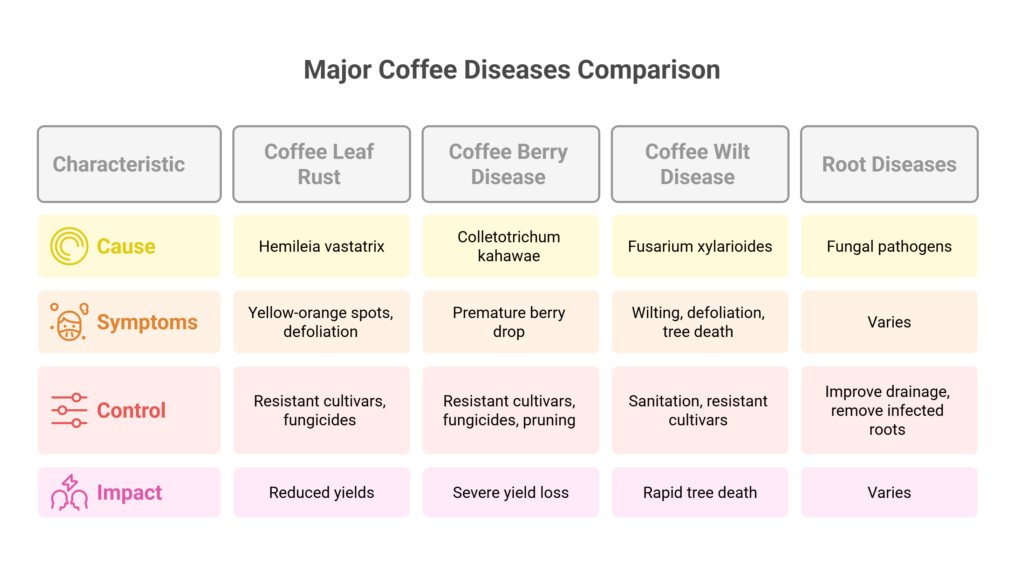
b). Coffee Berry Disease
Coffee Berry Disease (Colletotrichum kahawae) devastates African Arabica crops by infecting flowers and young berries, causing premature drop and severe yield loss. Control combines resistant cultivars (e.g., Ruiru 11, Batian) with targeted fungicide sprays during flowering/fruit set, supported by airflow-enhancing pruning and plantation hygiene to disrupt infection cycles.
c). Coffee Wilt Disease
Coffee Wilt Disease (CWD), caused by vascular fungi Fusarium xylarioides (Tracheomycosis), is a lethal pathogen that invades the xylem of coffee trees, blocking water/nutrient flow and causing irreversible wilting, defoliation, and rapid tree death—often within months of symptom onset.
Primarily devastating Coffea canephora (Robusta) in Central/East Africa, with emerging threats to Arabica, it spreads via contaminated tools, root grafts, and insect vectors. Control mandates aggressive sanitation: infected trees must be uprooted, all root fragments excavated, and plant material incinerated onsite to eliminate inoculum.
Replanting relies exclusively on resistant cultivars (e.g., Coffea liberica hybrids or selections like “Kewu” and “Mundo Novo”), complemented by strict farm biosecurity (tool sterilization, soil quarantine) and avoidance of wounding during field operations, as no curative treatments exist once vascular colonization occurs.
d). Root Diseases
Root diseases in coffee plants are often linked to poor drainage and plant stress, which create conditions favorable for fungal pathogens. To manage these diseases effectively, it is crucial to improve soil drainage to prevent waterlogging and reduce stress on the plants. Additionally, removing infected stumps and roots from the plantation helps eliminate sources of infection, preventing the disease from spreading to healthy plants. Proper plantation management practices, such as soil health improvement and avoiding over-irrigation, further reduce the risk of root diseases.
Harvesting
Coffee harvesting is a crucial process that ensures the quality of the final product. It begins when the majority of berries on a branch are ripe—deep red for Arabica and yellow to reddish-brown for Robusta—typically 8–11 months after flowering. Harvesting often involves multiple rounds to account for uneven ripening.
The primary methods include Selective Picking, where only ripe cherries are handpicked every 7–14 days during the season, ensuring the highest quality but requiring intensive labor; Strip Picking, where all cherries on a branch, regardless of ripeness, are harvested at once, usually at the end of the season, suitable for lower-grade coffee; and Mechanical Harvesting, used on large, flat farms, where machines shake the trees to dislodge cherries, offering efficiency but mixing ripeness levels.
The harvest period extends from November to February, with main picking occurring in December when the bulk of yields are collected. Fly picking involves small-scale harvesting of ripe berries earlier in the season (October to February), while stripping collects all remaining berries regardless of ripeness. Cleanings involve gathering fallen fruits during harvesting.
To maintain quality, unripe fruits should be sorted out and either processed separately or dried as cherry. Proper harvesting practices ensure optimal bean quality and minimize losses. The yield of dry parchment varies between 300-500 kg per acre.
Post-Harvest Handling
Ripe cherries must be processed (Washed, Natural, Honey/Pulped Natural methods) within 24 hours of picking to prevent spoilage and fermentation defects. Careful drying (sun or mechanical) to 10-12% moisture content is critical before storage/milling. Sorting to remove defects (unripe, overripe, insect-damaged, foreign matter) is essential for quality.
Investment Cost Per Acre for Coffee Farming (NRs.)
| S.N. | Category | Estimated Cost (NRs) |
| 1 | Land Preparation (plowing, leveling, pit digging) | 40,000 |
| 2 | Coffee Seeds / Saplings | 50,000 |
| 3 | Fertilizers and Manure | 20,000 |
| 4 | Irrigation System (Drip) | 150,000 |
| 5 | Labor Costs (Planting, maintenance) | 30,000 |
| 6 | Pest & Disease Control | 25,000 |
| 8 | Miscellaneous (post-harvest, equipment) | 25,000 |
| Total Initial Investment | 340,000 |
Annual Maintenance Cost Per Acre for Coffee Farming
Annual maintenance costs, incurred from the second year onward throughout the productive lifespan of the coffee farm, cover essential recurring activities required to sustain healthy growth and yield, including regular fertilization to replenish soil nutrients, pest and disease management to protect crops, pruning for optimal plant structure, weed control to reduce competition, and irrigation system upkeep to ensure efficient water delivery.
These expenses typically range between NRs 50,000 to NRs 100,000 per acre annually, reflecting variability due to factors like pest outbreaks, labor wages, fertilizer price fluctuations, and farm management intensity, with an average of NRs 75,000/year used for financial analysis to simplify long-term profitability projections while acknowledging potential cost volatility that significantly impacts net returns, especially given that maintenance constitutes the largest cumulative expense over the farm’s 25–30 year lifecycle, often exceeding 80% of total operational outlays after the initial investment.
Income from Coffee Farming per Acre
Coffee Arabica
Production Lifespan: 25 years
| Production Phase | Yield (kg/acre) | Price (NRs/kg) | Income (NRs) | Duration (Years) | Total Income (NRs) |
| Year 3 | 180 | 300 | 54,000 | 1 | 54,000 |
| Years 4–10 | 520 | 300 | 156,000/year | 7 | 1,092,000 |
| Years 11–20 | 365 | 350 | 127,750/year | 10 | 1,277,500 |
| Years 21–25 | 210 | 400 | 84,000/year | 5 | 420,000 |
| Total Income | 23 (productive) | 2,843,500 |
Coffee Robusta
Production Lifespan: 30 years
| Production Phase | Yield (kg/acre) | Price (NRs/kg) | Income (NRs) | Duration (Years) | Total Income (NRs) |
| Year 3 | 228 | 250 | 57,000 | 1 | 57,000 |
| Years 4–10 | 715 | 250 | 178,750/year | 7 | 1,251,250 |
| Years 11–20 | 605 | 300 | 181,500/year | 10 | 1,815,000 |
| Years 21–30 | 360 | 400 | 144,000/year | 10 | 1,440,000 |
| Total Income | 28 (productive) | 4,563,250 |
Analysis of Coffee Farming Profit Per Acre
For coffee arabica, the total investment cost comprises an initial outlay of NRs 340,000 for land preparation, saplings, irrigation, and other setup expenses, plus maintenance costs spanning 24 years (Year 2 to Year 25) at NRs 75,000/year, totaling NRs 1,800,000, resulting in a cumulative expenditure of NRs 2,140,000; against this, the total income of NRs 2,843,500 generates a net profit of NRs 703,500 over the 25-year lifespan, translating to an average annual profit of NRs 28,140 per acre.
For Coffee Robusta, the total income generated over 28 productive years amounts to NRs 4,563,250, against a total investment cost comprising an initial outlay of NRs 340,000 and 29 years of maintenance (Year 2 to Year 30) at NRs 75,000/year, totaling NRs 2,175,000, resulting in cumulative expenses of NRs 2,515,000; this yields a net profit of NRs 2,048,250 over the 30-year lifecycle, translating to an average annual profit of NRs 68,275 per acre.

